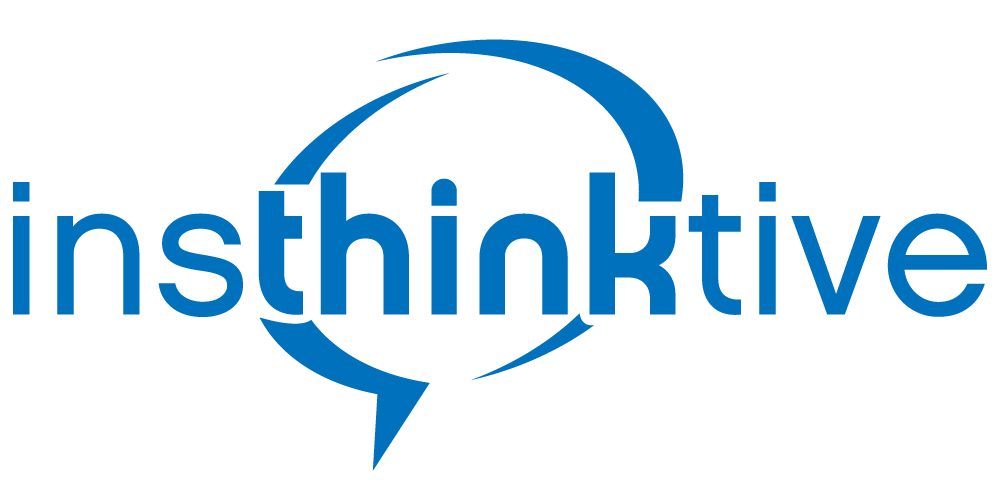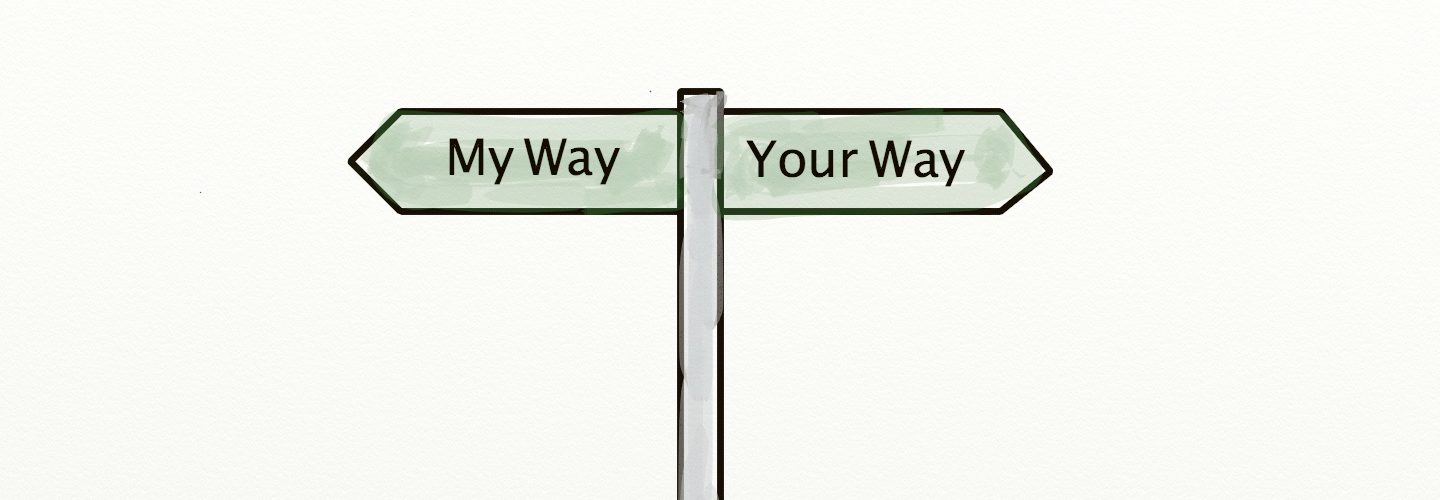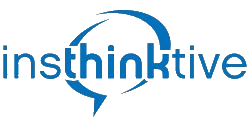When you meet clients, do you find that you are talking about you, your business, and your great history of success? If so you need to reconsider how you sell. When you move from you to your customer, you become a facilitator.
You enable your prospect to gain clarity. To be heard. To focus on what is important to them. It results in a higher level of Rapport and connection. More importantly, it results in More Sales. More Consistently. In Less Time, for you.
Central to this approach is a concept I call Mis-Mapping. Mis-Mapping is a term we use at Insthinktive to describe how so many sales conversations go wrong.
Your Brain Thinks With Maps
Your brain thinks in maps. It is a visual processor. Your maps represent the sum of all your experiences, knowledge and beliefs.
When you make a decision your brain references your map relating to the decision. The challenge arises when you reference an outdated map.
Some Research On How We Evaluate
According to Daniel Kahneman behavioural expert and author of Thinking Fast And Slow, we evaluate decisions in four ways
1) We evaluate on the basis of perceived value, not just objective value
2) We evaluate new products relative to a reference point usually products we already own or consume
3) People benchmark against these reference points. They treat improvements as gains and any shortcomings as losses
4) Perceived losses have a much more significant impact on buying behaviour than similarly sized gains. “Loss aversion” results in behaviours where gains must outweigh potential losses by three times before people will make a decision.
If your prospect is working with Maps that lead to these evaluations, you will struggle to connect and change behaviours.
Outdated Maps
Let’s take a simple example to illustrate this. If you were to take a road journey and you could only use a twenty-year-old map to navigate your way. Would you be able to make an informed decision on the best route to travel?
Most likely no. Many of the roads that exist on a current updated map would be missing from your map. Any decision you make would be made based on outdated information.
So too for your customers and their current mental maps. How can a prospect who has no experience, knowledge or belief system in place relating to your product or service make an informed decision?
How can a customer with an outdated mental map make an informed decision? They have experience and knowledge, but they may not be current.
Over 90% of the decisions you take every day are automatic. You simply don’t think through every decision as it is impractical. However, there are limitations to this convenient brain energy saving mechanism. Many of the decisions that we make are based on outdated maps.
When you are selling to a prospect with an outdated map you experience Mis-Mapping. Your map of the potential solution to their problems is different to their map. They may not have even realised they have either a problem to solve, or a potential opportunity to realise.
Even if they have a challenge they can articulate, in 80 to 90% of instances, they are unclear as to the extent of their problems or challenges. They may not have a clear map of the problem and how it is impacting, them and their organisation.
A Quick Test
For example, write down your definition of “faster” on a piece of paper.
Now ask one of your colleagues to write down their definition of “faster”.
Do they match?
In my experience of working with hundreds of salespeople, I have NEVER found a match in their definitions for common words they may use when selling. It has significant implications for the way we communicate. If you follow the logic of PRESENT then you suspend your selling until you have clearly understood the client and their need or potential opportunity. Without a systematic approach to achieving this goal, you and your clients will Mis-Map, and the outcomes will be negative for both parties.
Your Differentiator
In the world of selling your ability to overcome Mis-Maps is your single greatest differentiator from your competition. It will set you apart.
Do you believe that your potential client can differentiate you from your competitors when it comes to technical expertise? Or fully understand the impact that you, your product or service can have on them, their team and their organisation?
What will happen is that they will choose the partner who engages them best. The partner who understands them best. The partner who provides the best thinking and clarity. The partner they feel they can trust the most. The partner who understands their Map best.
Your role as the trusted advisor, the facilitator, is what helps them most. You are critical to their likelihood of moving forward.
Deliver Value Always
When you deliver value from the start of the sales process, you show through your actions that you are serious about them and their success. It is NOT the same as selling. It is about understanding and connecting at a deeper level to build the trust required for lasting relationships. By helping them succeed you succeed. When they know that your intentions are for mutual benefit, they respond. By bringing a fresh perspective to their thinking, you add value and insight.
Technical Simplicity
You may be a technical expert on your product or service, but your potential client is unlikely to share that level of expertise. That is why they want to engage you. Your expertise is critical to them, but they will not make their decision on technical expertise alone. The final decisions will be down to who is trusted most. Who does he/she believe will deliver and keep their promises will be the deciding factor.
What better way to build trust than by delivering value and helping them get clear on what they need, what the priority is, what success could and should look like and what the potential risks are.
Salespeople who have a transactional mindset approach the sale from the “I know what you need” and “I’ve got what you need” so “I’ll show you what you need” and “I’ll persuade you that you need it” and “I’ll give you a competitive price”.
The result of this approach is that you will end up competing on price for three reasons
You have not positioned yourself as a trusted advisor. You have added little value and contributed little to the quality of their thinking.
You have not differentiated yourself from your competition. You have not built a compelling value proposition that positions you ahead of your competitors.
Your client cannot evaluate your technical expertise and solution from your competition. They are unlikely to see any difference.
Value versus Price
“How confident are you on a scale of one to ten that you have all you need to achieve success on this project?”
“Are you open to a conversation on some ideas that could move that to a nine or ten?”
As you progress through the sales process, you get to a critical stage, IMPACT. It is your responsibility to help your client get clear on the tangible value they can receive if they solve their problems.
You can only do this if you have established what is most valuable to them. By spending extra time in the questioning and probing stage you get the opportunity dig deep and explore in detail the extent of any pain or the level of potential opportunity.
Are you able to quantify the impact your products or services have on your client’s businesses?
- Impact on costs
- Impact on time saved
- Impact on competitiveness
- Impact on ability to innovate
- Impact on responsiveness
- Impact on client satisfaction
- Impact on margins
- Impact on efficiency
- Impact on delivery times
- Impact on stockturn
- Impact on accuracy rates
- Impact on error rates
When you can relate your value to tangible impacts, you move beyond the price discussion to a value creation discussion. Who would you rather buy from? The company that creates the greatest value for your organisation or the company with the lowest price? The trusted partner delivers the greatest impact, value and tangible results for clients.
Your job is to be the person who can translate the customer’s need into an impact that transforms the way they view you and your organisation, product or service.
Key Takeaways
Buyers respond to salespeople who
- Listen deeply (to understand their Map of the world)
- Focus on relationships
- Communicate with clarity
- Challenge their thinking (their Maps) and offer insight
- Help them prioritise what is important
- Provide them with a business case they can sell to other stakeholders
- Help them overcome FEARS (which are embedded in their Maps)
- Focus on win/win
- Deliver value throughout the process of engagement
Best regards
Ronan Kilroy
Call me on +353(86) 7732201
Ronan Kilroy | Insthinktive Sales Leadership Ltd. | Blanchardstown, | Dublin 15, | Office 01 8220523
www.insthinktive.com
More Sales, More Consistently, In Less Time



